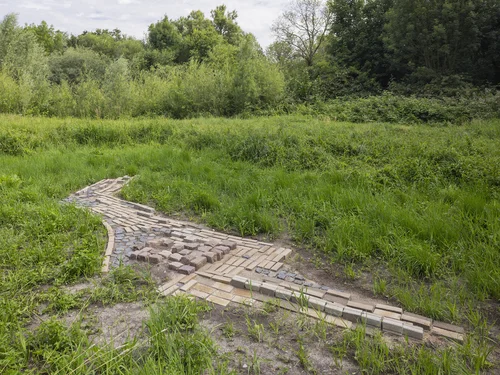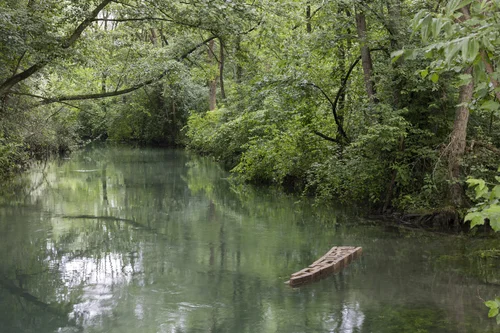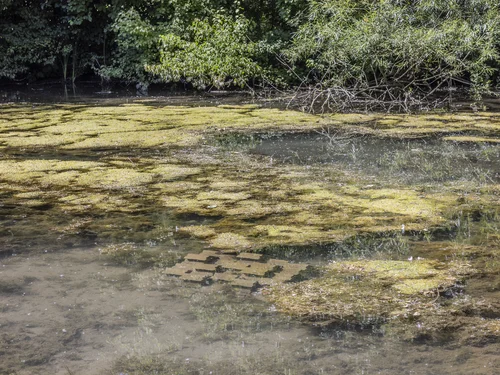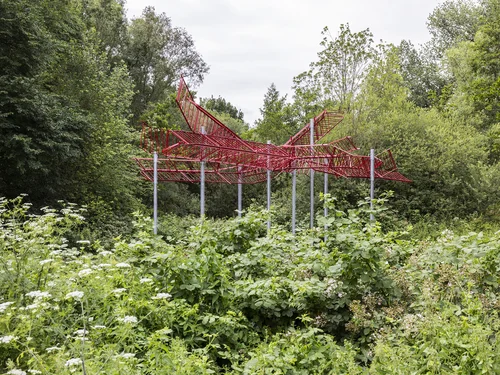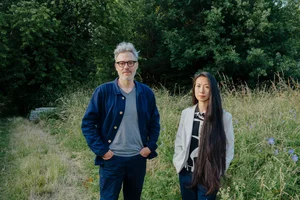raumlaborberlin with Zhenru Liang
Sediments
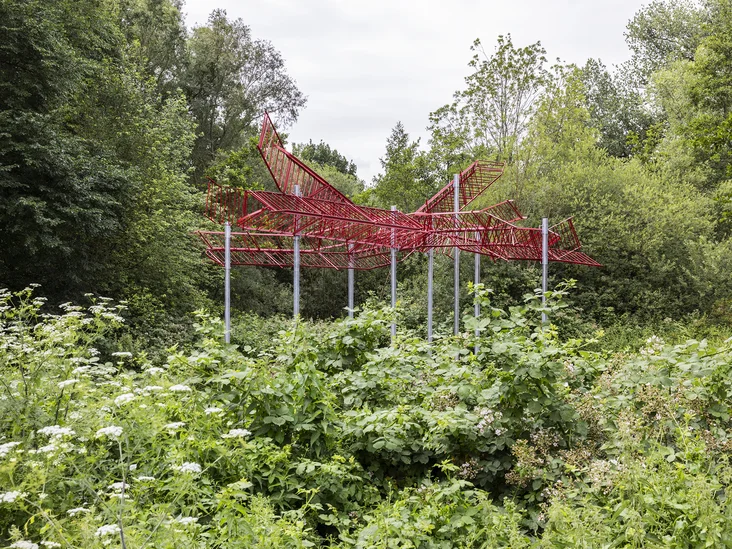
Sediments (2025)
raumlaborberlin and the artist Zhenru Liang refer to the natural cycle of the river, which takes place every day: sediments such as sand, vegetation, and nutrients are transported downstream by the water, deposited, and transformed.
The starting point is the garden area of the sources of the river Pader, which was severely damaged during the tornado in 2022 and is now being restored. The artists view the building materials that are becoming available, such as paving stones and balustrades, not as waste but as artistic material and use them to create four temporary sediment islands along the Pader.
The artists also refer to the flotation agriculture that has been practised in the wetlands of the Pader since the 18th century: artificial ditches were used to water meadows in order to use the sediment that was carried along as fertiliser. Traces of this practice can still be seen today. The work also points out that the Earth’s resources are finite. All materials – including water – are only available in a certain quantity and remain in the Earth’s sphere. They often change their form and state, but they do not disappear.
Sediments makes it clear that the boundary between nature and culture is fluid. The Pader is a river that is constantly influenced and shaped. The different deposits are like a living archive: they contain materials, stories and memories that accumulate over time – like the balustrades and paving stones of the Pader source area.
Information on the Artwork
Sedimente – Island 1 (raumlaborberlin with Zhenru Liang)
approx. 7.3 × 2.2 × 0.2 m
4 types of paving stones ( atural stone, concrete)
Sedimente – Island 2 (raumlaborberlin with Zhenru Liang)
approx. 3 × 0.5 × 0.8 m
Concrete paving stones
Sedimente – Island 3 (raumlaborberlin with Zhenru Liang)
approx. 1 × 1 × 0.4 m
Concrete paving stones
Sedimente – Island 4 (raumlaborberlin)
12 × 5 × 6 m
Stair balustrades, 8 steel supports, 7 natural stone blocks, gravel lawn
